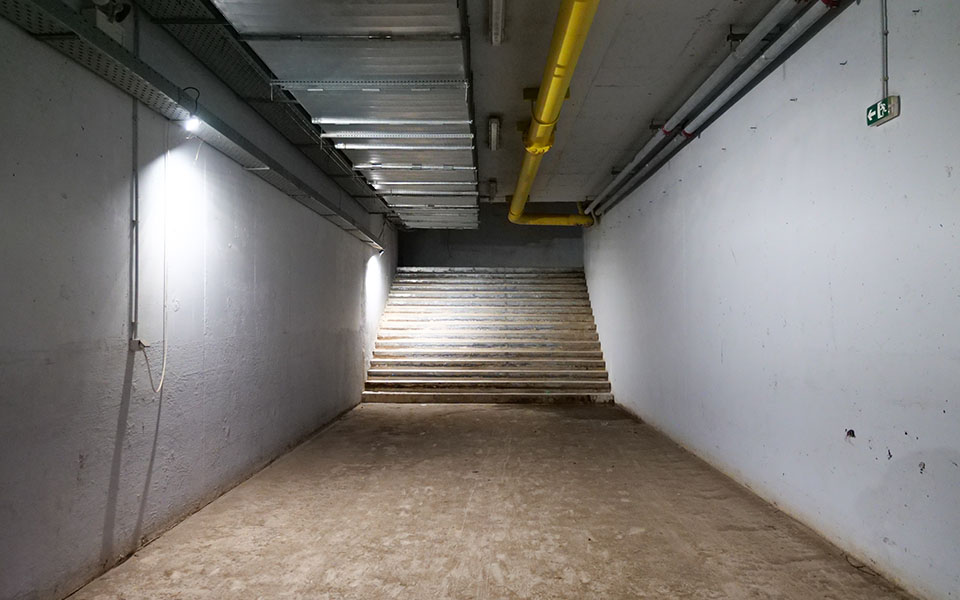
Athens Olympic Sports Center “Spyros Louis”. As it is called, “the flagship of Greek sports.” A sports complex with fields, a stadium, a swimming pool, a bike path, architectural creations by Santiago Calatrava. A group whose reputation has gone beyond the borders of Greece. But few people know that under the UAC there is an invisible world.
Underground galleries, a canister, a heater and… hidden treasures make up a puzzle that can be used as a stage for a movie and, if necessary, used for escape or for hiding. www.kathimerini.gr was the first media to enter the OAKA shelters and guide you through them.
In planning the organization of the Olympic Games, on January 8, 1980, the then Prime Minister of Greece, Konstantinos Karamanlis, laid the foundation stone for a stadium that, in the years to come, will inextricably link its history with our sport and its progress. In the following years, the Aquatics Centre, bike path, indoor sports hall (later “Nikos Galis”) were added. The hosting of the Olympic Games turned the site into a construction site and added the Olympic Tennis Center. It was the time when the OAKA found its own… invisible world.
“OAKA is not only what people see. There are things underground, in the bowels of the earth, under the UACA, and also above the UACA, which is a canopy. In ancient times, sports competitions, poetry and dance competitions were held in this place in honor of the goddess Artemis Amarisia. This means that there are several antiquities under it. Among them are the Roman balanium, the famous Hadrian’s aqueduct, which passes through the neighborhood of the Organization, and the Roman reservoir. Let’s now move on to the most modern ones, such as corridors – tunnels connecting objects. This is done in order to serve athletes and coaches during major events so that they can enter the stadiums and fields, ”Konstantinos Halioris, coordinator, general director of OAKA, told us.
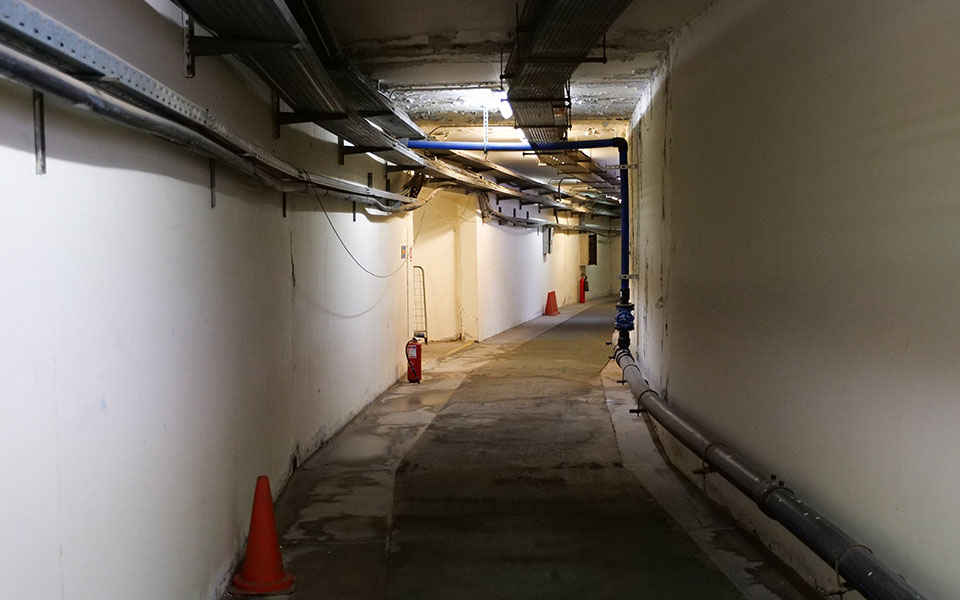
Tunnel length 1,975 m
Almost 2000 meters are the tunnels that exist under the UAC. All objects are connected to them, and some of them lead to “secret” exits. With a width of about three meters and a height of 2.75 meters, they are designed in such a way that a car can fit in them. When visiting the Stadium by high security persons, the person in charge informs their guards about the presence of gallery tunnels so that, if necessary, they can hide underground.
The tunnels would be the envy of the mythical engineer Daedalus. In many places they resemble a labyrinth. Branches made of concrete in the bowels of the earth are designed to help the functionality of the complex. The stadium is connected by arcades with auxiliary courts (K1). Loudspeakers are installed on the walls of the underground galleries to call the athletes preparing for K1. A 60-meter couloir passes before the exit so that the athletes can continue their warm-up and “warm up” before entering the playing field of the central stadium. When the athletes finish the race, they exit and return to the auxiliary stages in the same way. In the same area there is also a special exit for athletes with disabilities.
The remaining paths of the gallery communicate with all facilities (basketball court, swimming pool, cycle track, etc.). Inside them are plumbing and electrical pipes. The basement of the OAKA also houses the Olympic flame mechanism with a gas and hydraulic mechanism that lowered and raised the torch.
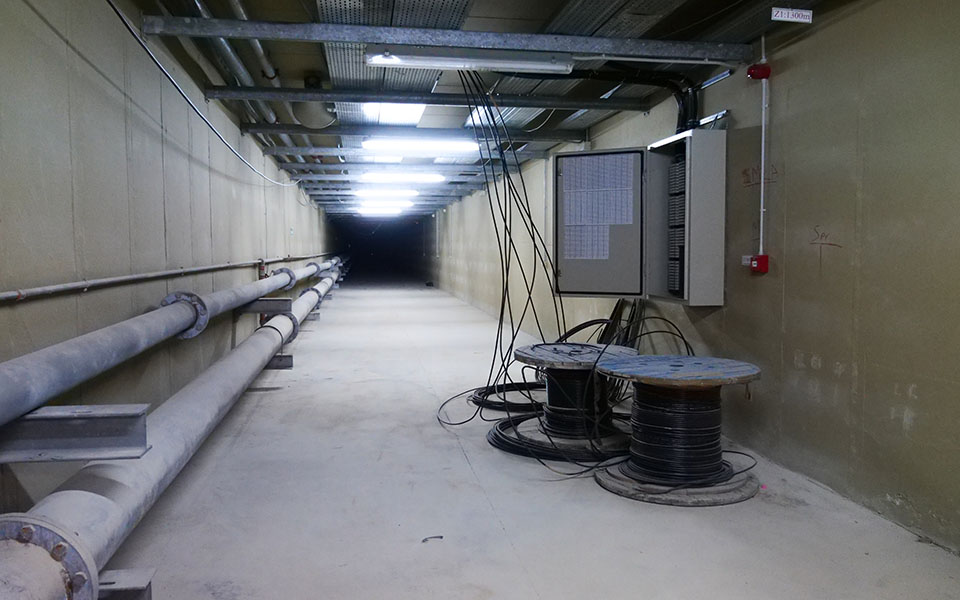
Unknown “canister” and… mysterious rollercoaster
Our wanderings through the cellars of the UAC continue and we get to the “canister”. In ancient times, the arena was called that part of the arena that was covered with sand and where athletes competed. Metaphorically, this is called the field where the battle takes place. And… this place was a battleground for the people who worked on the 2004 opening and closing ceremonies.
The arena is located below the center of the field. In the center. At that moment, those who remember the opening ceremony, the olive tree “came out” from the bowels of the earth. So, below is a well with a depth of more than 40 meters, which reaches the level of groundwater. In fact, stadium workers monitor the water level and pump it to water the plants. In the arena, located in the bowels of the stadium, there are machines that produced gas for the flame of the 2004 Ceremony, an elevator on which objects and people got inside the stadium, etc. The fire extinguishing tanks of the central stadium with small and large pressure tanks are also located on the grounds under the stadium . They run on electricity, but in the event of a failure, also on a diesel engine.
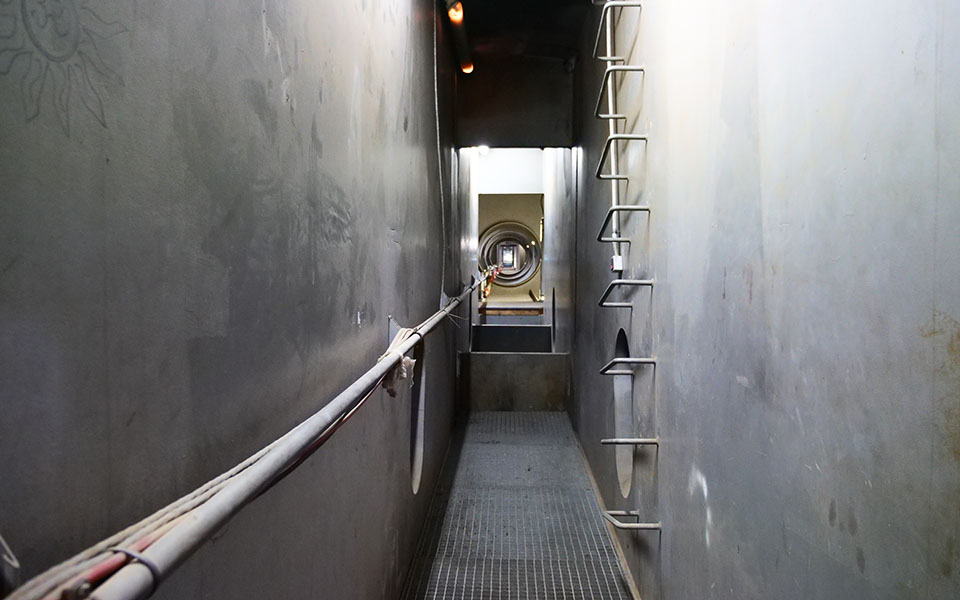
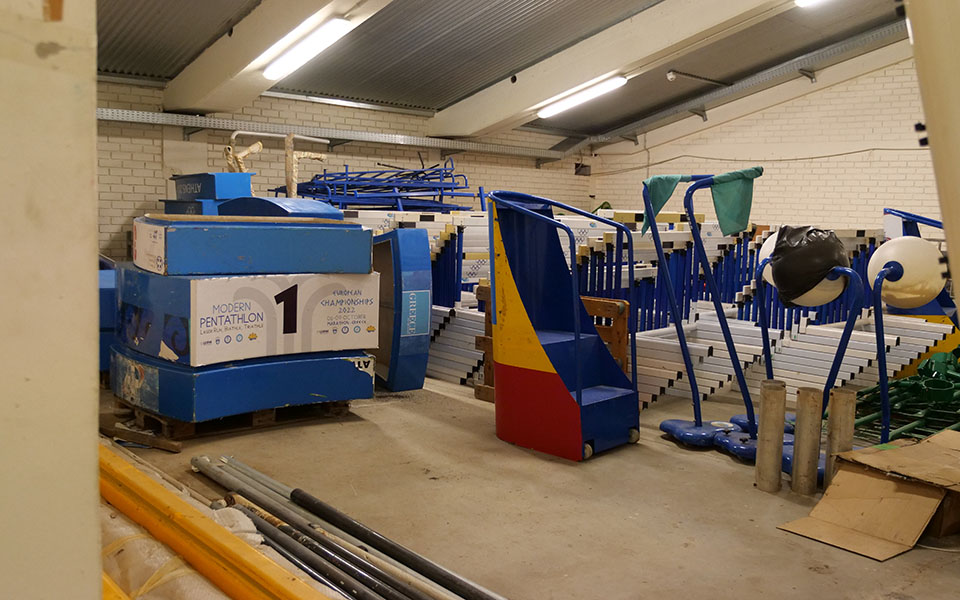
“Under the main stage is an unknown arena which, if I may use the term, was the main stage control center for everything we saw at the 2004 opening and closing ceremonies. from the bowels of the Olympic Stadium, we will remember the statues, etc. That is, it is understood that under the UAC there is … a second UAC,” Mr. Halioris emphasized.
And in this… “OAKA under OAKA” there are hot water burners for locker rooms, air conditioners, entire rooms that are substations, etc. An invisible world that requires many man-hours to be properly maintained. Many buildings are made with love and responsibility. The underground engine room of the central stadium has a series of grilles through which air enters the space. However, if the engine room catches fire, this design is based on special “rails” that will melt from the heat, and as soon as there is no air, the fire will go out. Although 40 years have passed since the stadium was built, this “patent” is a guideline for workers.
“Treasures” of 2004 and “mysterious” roller coasters
The basements of the OAKA also contain items that made up the presentation of the 2004 Opening Ceremony. From figurines of statues to participants’ costumes. The leadership of the Organization strives to have all this exhibited in the museum. “Over the past three years, we have been trying to make the Olympic Stadium a center of sports and culture. At the moment, I would like to thank the staff who support the project, and we share a common vision together, as well as the Deputy Minister of Sports, Lefteris Avgenakis, who, through his daily leadership, supports and helps the project. This is a team effort. For example, with the Antiquities Revenue Service, we are trying to highlight archaeological sites. With the maintenance staff, the foremen, the Directorate of Technical Services, so that we can use all this infrastructure for our own work, in order to better serve the stadium and make it more functional for everyone,” said Mr. Halioris.
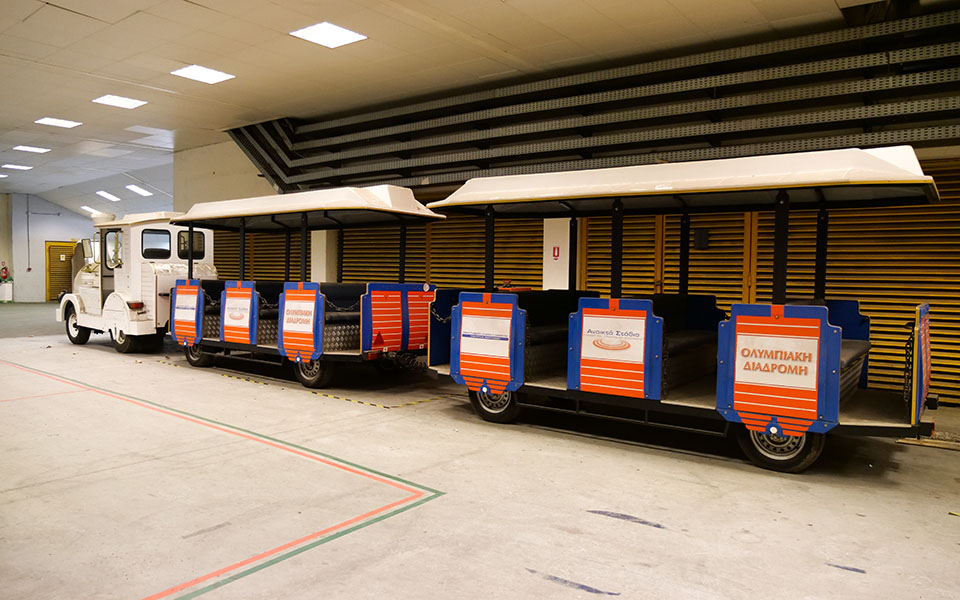
Wandering through the basements of the UAC continues and suddenly we see a white train in front of us. It was bought after 2004 for the purpose of connecting and transporting people to some of the Olympic venues. It was an ambitious plan by the then Deputy Minister of Culture, Fanis Palli Petralia, which ended ingloriously because the rollercoaster was not… cooperative. According to employees, he had many mechanical problems, as a result of which his work was stopped. The current management of the UACA will try to renovate it and if possible, a cultural route will be built in the surrounding area.

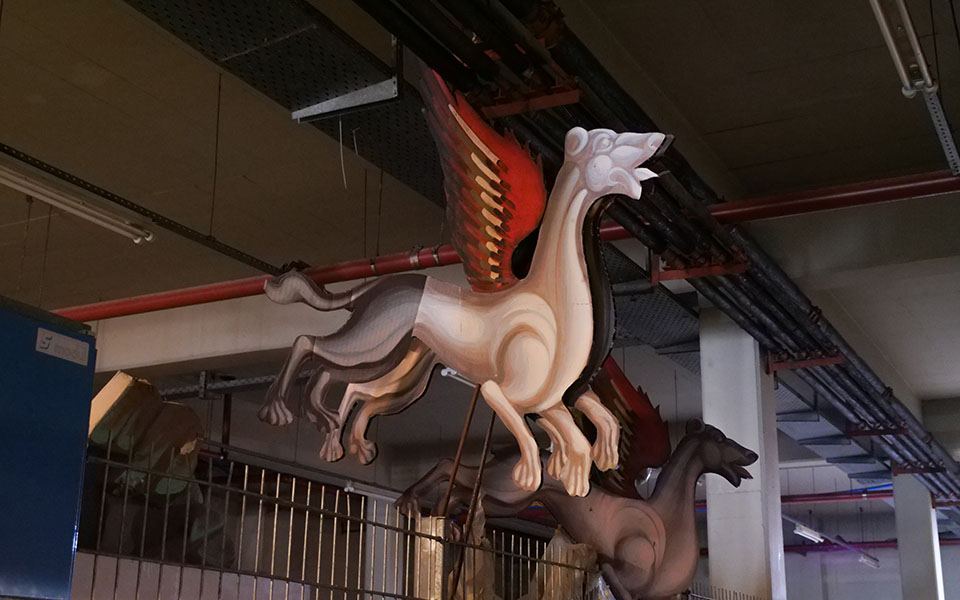
However, the sports material of 2004, found in the bowels of the UAC, can also be called a “treasure”. With the logos of a major sporting event clearly visible, there are items that are not only collectible but also functional. The obstacles, for example, have been repaired and “borrowed” for Panhellenic Championships or club events. There is also a 2004 hammer cage. However, its transportation is difficult, so it remains in the basement to remind you of the moments of Olympic glory experienced by the underground and aboveground facilities of the “sport flagship”.
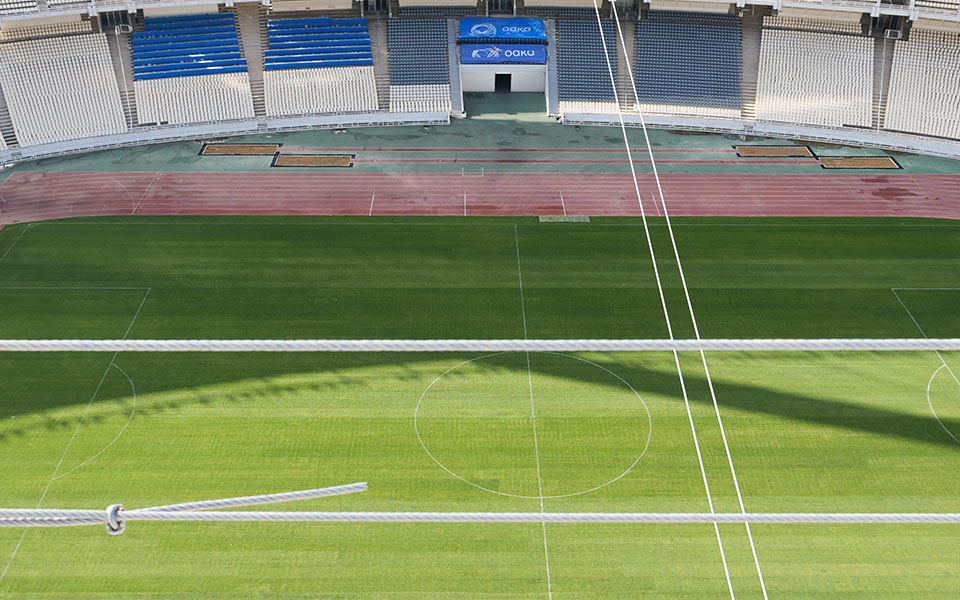
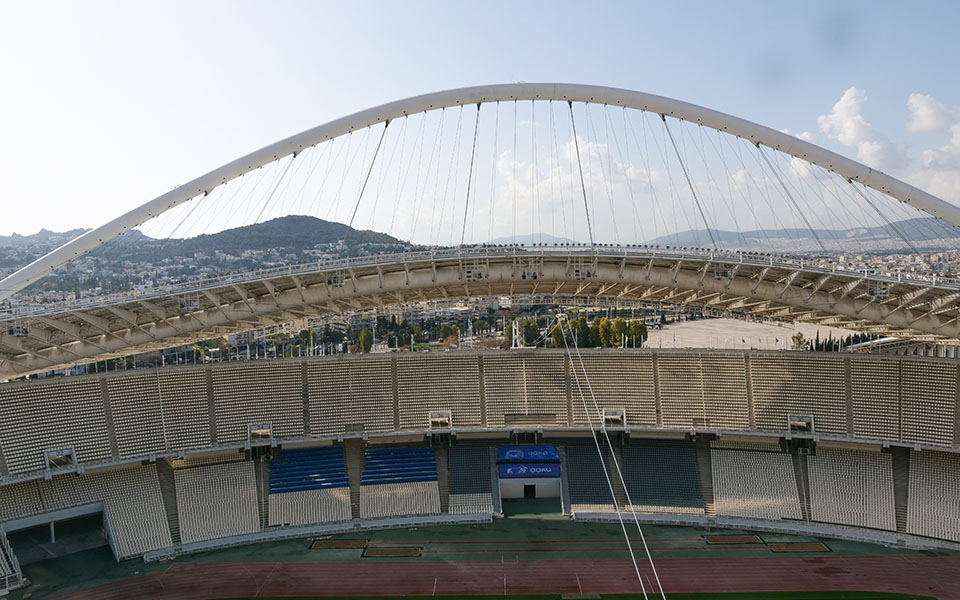

However, the “pearl” of the UAC is not in the basement, but above it. We are talking about the canopy of Calatrava, an architectural creation, on which tons of ink and a lot of money were spent. Its arches, under certain conditions, can be visited, and those who find themselves on the roof will have the opportunity to admire the OAKA and Athens from above. “Few have gone this route. The shelter is currently open to technicians from the Agency’s services. However, in the future we would like to use it for tourism. To be able to visit the canopy and from there see Athens and the stadium from above. Both the route inside the canopy and the view are a unique experience. Let’s not forget that OAKA, thanks to the roof, is one of the ten tallest buildings in Greece,” Konstantinos Halioris, CEO of OAKA, told kathimerini.gr.
Source: Kathimerini
David Jack is a sports author at 247 News Reel, known for his informative writing on sports topics. With extensive knowledge and experience, he provides readers with a deep understanding of the latest sports advancements and trends. David’s insightful articles have earned him a reputation as a skilled and reliable writer.

